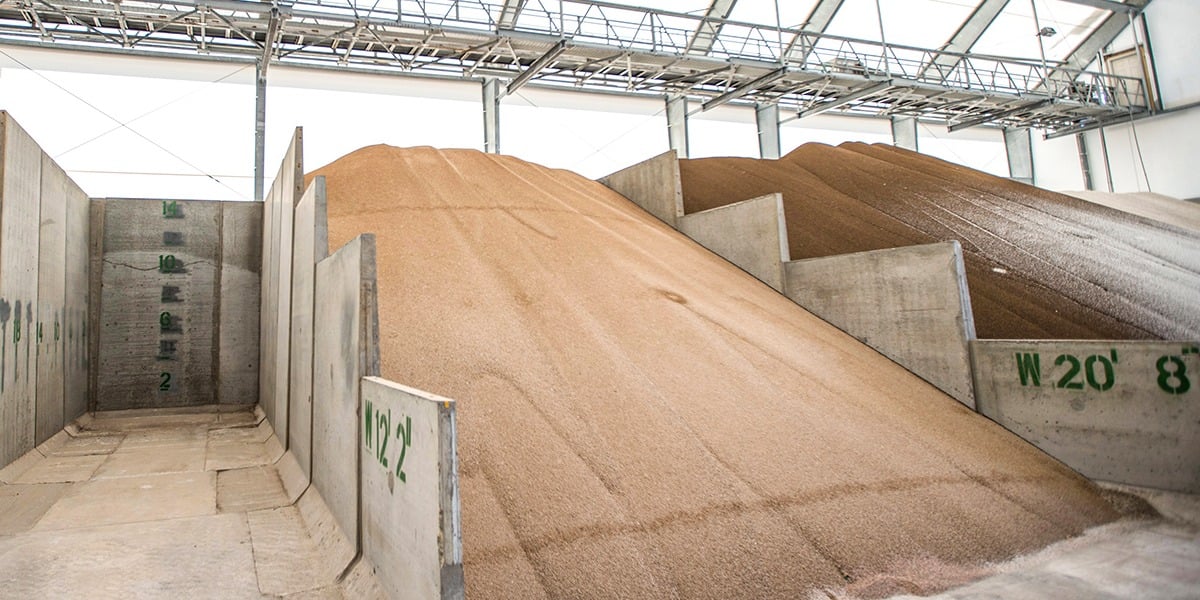How to Prevent Corrosion in Port Storage Buildings

Corrosion is a costly problem for port storage facilities. As a metal building corrodes, its structural integrity weakens—drastically reducing lifespan, introducing leaks, and causing expensive maintenance.
Harsh marine environments create a perfect storm for accelerated corrosion. Salt spray, humidity fluctuations, and industrial pollutants combine to create an aggressive, corrosive environment for building materials.
Corrosion in port environments is an electrochemical process accelerated by saltwater exposure. When metals are exposed to electrolytes (like saltwater), they form galvanic cells that facilitate electron transfer, leading to metal degradation. This process happens at microscopic levels but quickly escalates to visible damage and structural compromise.
Steel roofs contain thousands of tiny fasteners joining the metal sheets. Each of these fasteners joins two separate metals and creates a tiny hole in the roof assembly, where corrosion likely begins. Moreover, most painted metal roof warranties are limited or voided when located near saltwater environments.
For port operators, these vulnerabilities can cause unexpected structural failures, leading to damaged cargo, operational shutdowns, and potential safety hazards for personnel.
Some elements, including salt and water, speed up growth of corrosion. This makes port storage buildings in terminals and marina environments particularly susceptible to damage.
Unfortunately, once corrosion spreads, it is difficult to stop. The solution, then, occurs during the development phase—by choosing a building that is less vulnerable and more likely to maintain quality in a corrosive environment.
Tension fabric buildings have several advantages for port and terminal storage.
Corrosion Resistant Fabric Panels: The First Line of Defense
ExxoTec™ fabric is made of a strong woven polyester scrim with a protective PVC coating and a top lacquer on each side. Unlike steel-cladded roof systems, fabric panels are welded together to create a weather-tight panel that is tensioned between the frames. This eliminates the need for metal fasteners, which penetrate the roof to hold the panels together.
A tensioned, seamless design eliminates thousands of potential corrosion initiation points, dramatically improving envelope integrity in marine environments.
Unlike steel, ExxoTec™ is inert to corrosion. The cladding will not corrode or rust in any environment, and a warranty is always available—even at ports and terminals.
Solid Steel Frames: Quick Detection
Solid steel web beams don’t have hollow tubes where corrosion can begin undetected. If corrosion does begin on the surface area, the building owner can quickly identify and correct the problem.
Visibility is crucial for port facilities, where hidden corrosion in traditional hollow structural sections often leads to catastrophic failures.
Protecting Against Corrosion
The best way to prevent corrosion damage is to stop it before it starts. Buildings that will be used in corrosive environments (or to store corrosive materials) should receive a special treatment process to stop corrosion.
- At Legacy, we start with blasting the steel to an SP6 - 14 commercial blast. This removes impurities from the surface and creates the microscopic peaks and valleys that allow the protective coating to adhere. Skilled technicians apply a total of 13 mils of durable, solid coating.
- The first coat is 3 mils of a zinc-rich primer. Zinc provides sacrificial protection to the steel—if corrosive materials creep in through the outer protective layers, the zinc will corrode instead of the steel.
- After the primer coat is dry, technicians apply 5 mils of epoxy paint. The paint provides a solid barrier to protect the frame.
- Finally, 4 mils of durethane are applied. In addition to protecting the fabric from corrosion, the durethane layer shields the structure from UV rays and other potential damage.
A multi-layered approach creates a comprehensive defense system against the complex combination of corrosive elements present in port environments. For added protection, we include a 15-year warranty on our EpoxxiShield COR Elite frame finish.
Other Advantages for Port and Marina Storage Buildings
Durable port storage facilities need more than just corrosion protection. At Legacy, we help port storage contractors and designers meet marine environment demands with:
- Custom design for increased efficiency
- In-house design, manufacturing, and installation for expedited construction
- Compliance with industry safety and environmental regulations
- Rapid deployment capabilities to meet changing port cargo demands
- Lower lifecycle costs compared to traditional metal structures in marine environments
- Enhanced energy efficiency through natural daylighting, reducing operational expenses
- Flexible foundation options accommodating poor soil conditions common in port areas
With tensioned, corrosion-resistant fabric structures, port operators can reduce maintenance costs, extend operational lifespans, and experience fewer service disruptions.
Corrosion resistance is just one way a fabric building can serve your needs. Discover how our specialized building systems can protect your port investment.
Subscribe to our Blog
Recent Posts
- 5 Factors Every Project Owner Should Consider Before Approving Building Materials
- The 20-Year View: How Material Choices Impact Long-Term Operational Costs
- Climate Resilience in Commercial Construction: Why Traditional Methods May Not Be Enough
- Speed and Quality: The Role of Hybrid Building Materials
- Beyond the Bleachers: Designing Visually Striking Sports Facilities
